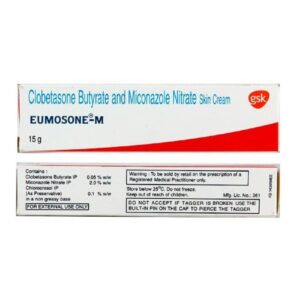CLOBETASONE
CLOBETASONE: Clobetasone, also known as clobetasone butyrate, is a potent glucocorticoid medication. It is primarily used topically to treat inflammatory skin conditions such as eczema, dermatitis, and psoriasis.
Mechanism of Action:
Clobetasone belongs to the group of corticosteroids, which have anti-inflammatory, immunosuppressive, and antipruritic effects. It works by inhibiting the release of inflammatory mediators and reducing the infiltration of inflammatory cells, thereby reducing skin redness, itching, and swelling.
Use:
Clobetasone is applied as a cream or ointment directly to the affected skin. It should not be used on broken or infected skin, the face (unless instructed by a doctor), or areas near the eyes. It is important to follow the prescribed instructions and duration of use provided by a healthcare professional.
Dose:
The specific dosage and frequency of application will depend on the severity of the condition being treated. Generally, a thin layer of clobetasone cream or ointment is applied to the affected area once or twice daily. It is important to wash hands before and after application and avoid excessive use.
Side Effects:
While clobetasone is generally well-tolerated, it can cause some side effects. Common side effects may include a burning or itching sensation, dryness, redness, or irritation at the application site. Prolonged use, especially on large areas of the body or under occlusive dressings, may increase the risk of systemic side effects such as skin thinning, acne, stretch marks, and changes in skin color.
Less common but more severe side effects may occur if the medication is absorbed into the bloodstream, especially if used on broken or damaged skin. These may include adrenal suppression, Cushing’s syndrome, increased susceptibility to infection, and allergic reactions. It is important to discuss any concerns or symptoms with a healthcare professional.
Overall, clobetasone is an effective medication for the short-term treatment of various inflammatory skin conditions when used as directed. It should always be used under the guidance of a healthcare professional to minimize the risk of side effects and to ensure its appropriate use.

